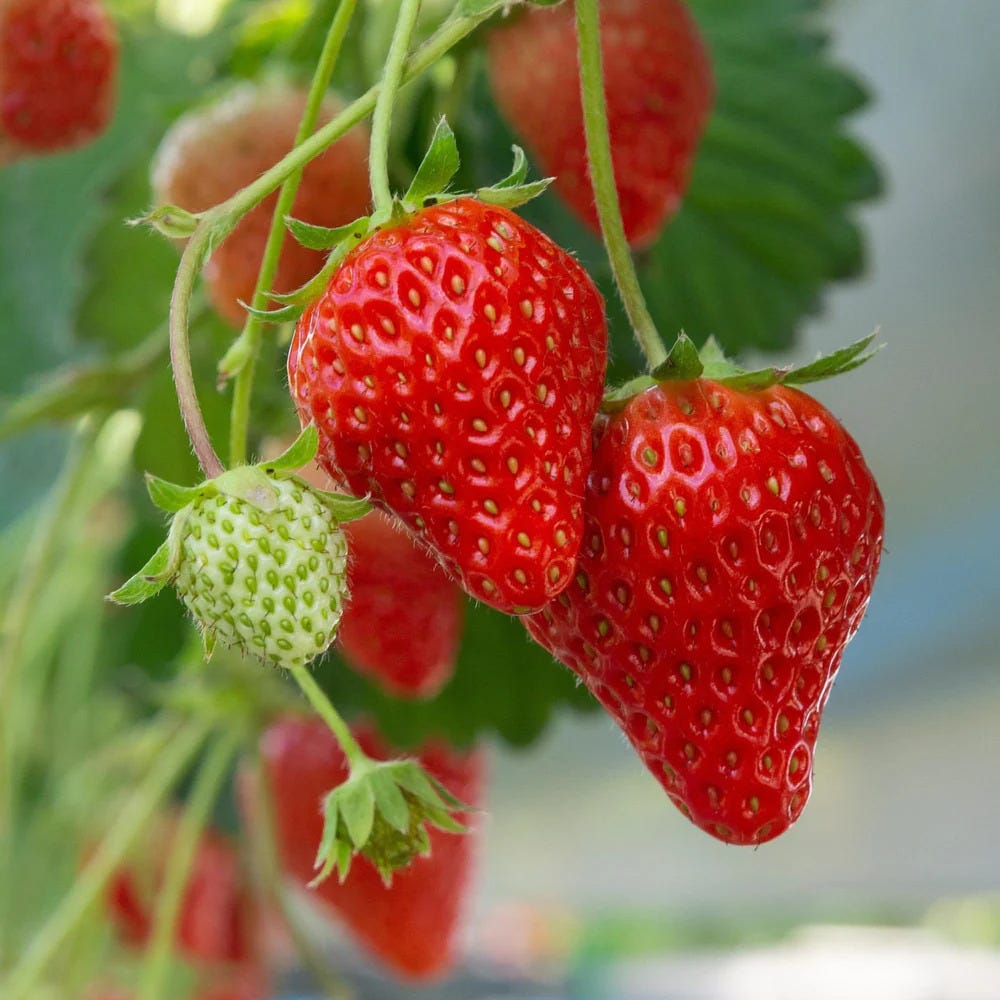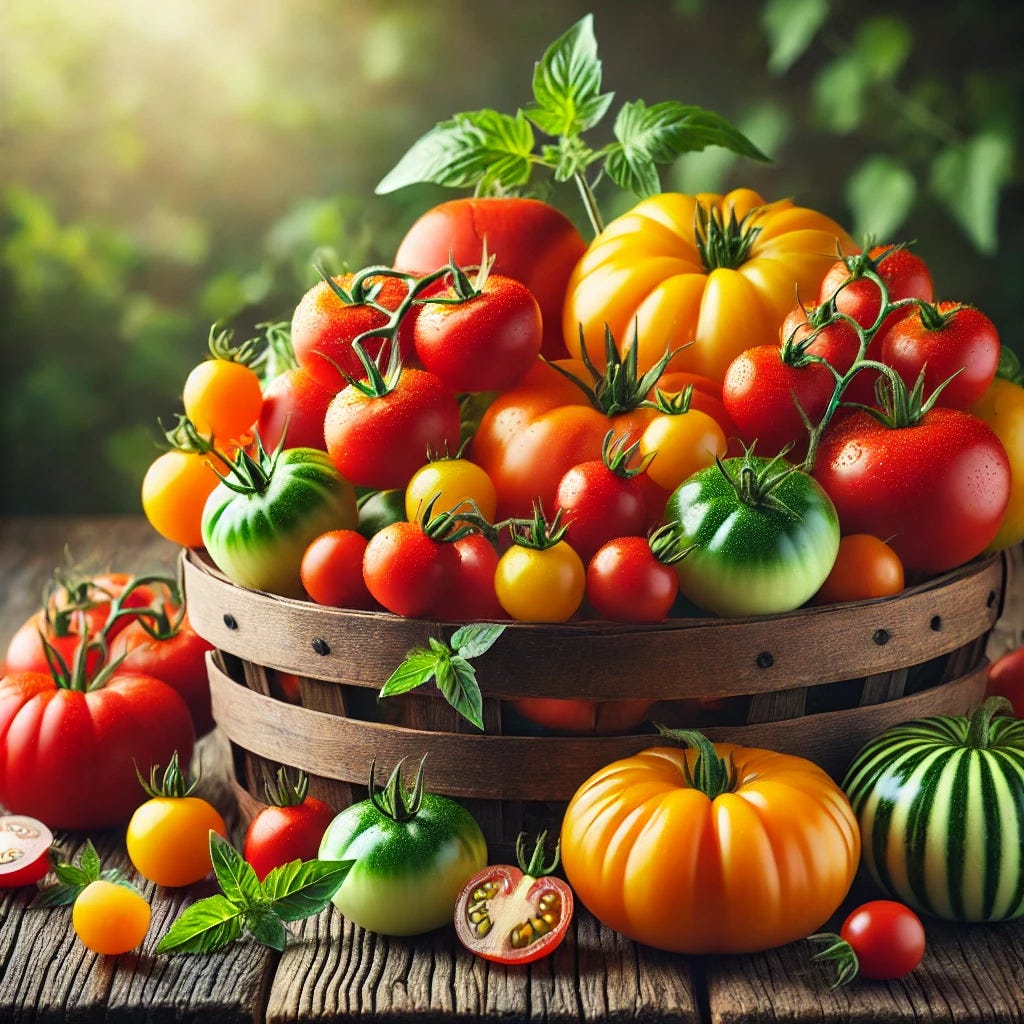Growing Pomegranates: A Guide to Cultivating This Nutritious Superfruit
Pomegranates (Punica granatum) are delicious, antioxidant-rich fruits that have been cultivated for thousands of years. Known for their jewel-like seeds and sweet-tart flavor, pomegranates thrive in warm climates and can be grown in gardens or containers. This guide will cover everything you need to know about planting, growing, and caring for pomegranate trees to ensure a bountiful harvest.

Why Grow Pomegranates?
Growing your own pomegranates comes with several benefits:
- Nutrient-Rich Fruit: High in vitamins C and K, antioxidants, and fiber, making them a powerful superfood.
- Drought-Tolerant: Once established, pomegranates require minimal water, making them ideal for dry regions.
- Long-Lived Tree: Can produce fruit for decades with proper care.
- Beautiful Ornamental Plant: With bright orange-red flowers and glossy green leaves, pomegranate trees add visual appeal to any garden.
- Versatile Uses: Enjoy fresh, in juices, salads, desserts, or even as a natural dye.

When to Plant Pomegranates
The best time to plant pomegranate trees or seeds depends on your climate:
- Spring (After the Last Frost): Ideal for temperate regions, allowing plants to establish before summer.
- Fall (Before Winter Dormancy): Suitable for warmer climates, as it gives roots time to develop before the growing season.
Pomegranates need a long, hot growing season to produce the best fruit, so they thrive in USDA zones 7–11.
Where to Plant Pomegranates
Pomegranate trees prefer warm, sunny locations with well-drained soil.
- Sunlight: Requires at least 6–8 hours of direct sunlight daily for optimal fruiting.
- Soil: Well-draining, sandy or loamy soil with a pH of 5.5–7.0. Avoid heavy clay that retains too much moisture.
- Spacing: If planting multiple trees, space them 10–15 feet apart to allow for full growth.
- Containers: If growing in pots, choose a large container (at least 10–15 gallons) with good drainage.
How to Plant Pomegranates
Planting from Seeds
- Extract and Dry Seeds: Remove seeds from a fresh pomegranate, wash off pulp, and dry for a day.
- Germination: Plant seeds ¼ inch deep in moist, well-draining soil.
- Temperature: Keep at 70–85°F (21–29°C) for germination, which may take 30–40 days.
- Transplanting: Once seedlings develop 3–4 true leaves, transfer them to larger pots or outdoor locations.
Planting from Saplings
- Dig a Hole: Twice the width of the root ball but no deeper.
- Planting Depth: Keep the crown at soil level to prevent rot.
- Backfill Soil: Lightly pack the soil around roots and water thoroughly.
- Mulching: Apply a 2–3 inch layer of mulch to retain moisture and suppress weeds.
How to Care for Pomegranates
Watering
- First Year: Keep the soil evenly moist but not waterlogged.
- Mature Trees: Water deeply once every 7–10 days during dry periods.
- Drought Conditions: Pomegranates tolerate drought but will produce better fruit with consistent watering.
Fertilization
- First Year: Apply a balanced organic fertilizer (10–10–10) every 4–6 weeks during the growing season.
- Mature Trees: Fertilize in early spring and midsummer with compost or a potassium-rich fertilizer to promote flowering.
Pruning and Maintenance
- Shape the Tree: In early years, prune to create a strong, open canopy for better airflow and light penetration.
- Remove Suckers: Trim unwanted shoots growing from the base.
- Annual Pruning: In late winter, remove dead or overcrowded branches to encourage new growth.
Pollination and Fruit Set
- Pomegranates are self-pollinating, but having multiple trees can increase fruit yield.
- Bees and butterflies help pollinate, so planting pollinator-friendly flowers nearby can enhance production.
Companion Plants for Pomegranates
Companion planting can improve growth, repel pests, and enhance soil health.
Best Companion Plants
- Lavender and Rosemary: Attract pollinators and repel pests.
- Marigolds: Deter harmful insects and improve soil.
- Basil and Thyme: Help repel aphids and other pests.
- Legumes (Beans, Peas): Fix nitrogen in the soil, benefiting tree growth.
Plants to Avoid
- Walnuts: Release chemicals that inhibit nearby plant growth.
- Nightshades (Tomatoes, Peppers): May attract similar pests and compete for nutrients.
When and How to Harvest Pomegranates
When to Harvest
- Pomegranates ripen 5–7 months after flowering, typically in late summer to early fall.
- Signs of ripeness:
- The skin turns deep red, pink, or orange depending on the variety.
- The fruit feels heavy for its size.
- The outer skin becomes slightly rough and firm.
How to Harvest
- Use pruning shears to cut the fruit from the branch rather than pulling it off.
- Handle gently to prevent bruising.
Storage Tips
- Refrigerate whole pomegranates for up to 2 months.
- Freeze seeds for up to a year for use in smoothies or desserts.
Using Pomegranates: Culinary and Health Benefits
Pomegranates are incredibly versatile and nutritious, making them a great addition to a healthy diet.
Health Benefits
- Rich in Antioxidants: Helps protect cells from damage and inflammation.
- Heart-Healthy: Supports lower blood pressure and improved circulation.
- Aids Digestion: High fiber content promotes gut health.
- Boosts Immunity: Packed with vitamin C and essential nutrients.
Ways to Use Pomegranates
- Fresh: Eat the seeds as a snack or in salads.
- Juice: Make refreshing, homemade pomegranate juice.
- Cooking: Add to sauces, marinades, and desserts.
- Garnish: Sprinkle over yogurt, oatmeal, or rice dishes for added flavor.
Final Thoughts
Pomegranates are a rewarding fruit to grow, offering both beauty and nutrition. With the right care, your tree can produce fruit for decades, making it a valuable addition to any home garden. Whether planted in the ground or in containers, pomegranates thrive with sun, well-draining soil, and proper watering.
Start growing high-quality pomegranate seeds today from Organic India Seeds and enjoy the benefits of homegrown, fresh pomegranates straight from your garden.



Commenta
Questo sito è protetto da hCaptcha e applica le Norme sulla privacy e i Termini di servizio di hCaptcha.